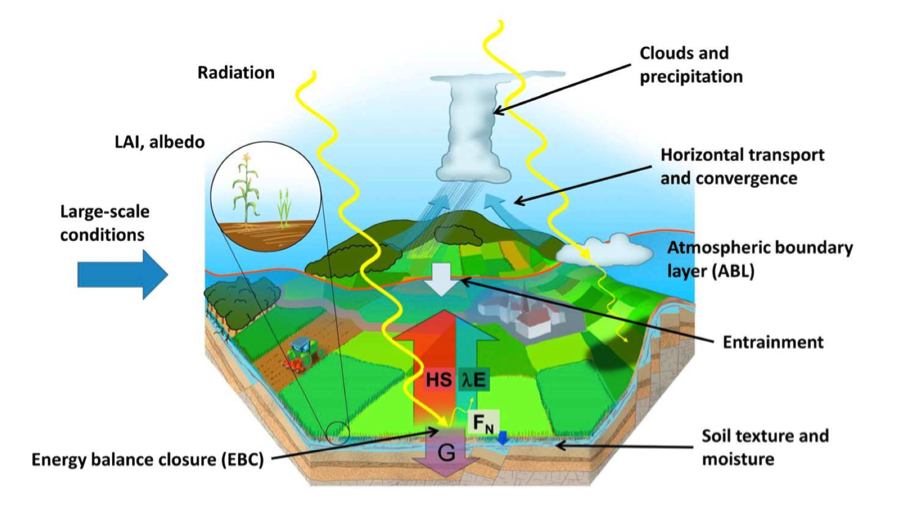The importance of thermodynamic profiling in the boundary layer
Submitter:
Turner, David D. — NOAA Earth System Research Laboratory
Cadeddu, Maria Paola — Argonne National Laboratory
Area of research:
Atmospheric Thermodynamics and Vertical Structures
Journal Reference:
Science
Observations of temperature and humidity profiles in the lowest three kilometers of the troposphere have shown non-uniform spatial and temporal distributions. Because many atmospheric processes seemingly depend on inhomogeneities in thermodynamic fields, significant observational gaps that limit progress in weather and climate research and operational weather forecasting exist. For example, a horizontal difference of 1 g/kg of water vapor near the surface in a localized region can determine whether a storm will initiate convection or will not develop. Ground-based passive and active remote sensing systems can close these observational gaps and provide valuable data that researchers can use to study the importance of inhomogeneities in the thermodynamic field for various atmospheric processes. The ARM Facility is a leader in evaluating sensor capabilities by testing these tools in both field experiments and at its long-term atmospheric research sites.
Impact
The article cited provides a review of state-of-the-art and new remote-sensing technologies that can be used for lower tropospheric thermodynamic profiling. These technologies have the potential to resolve vertical structures and the mesoscale variability of thermodynamic fields. The current and expected positive contributions of these profiling systems to the understanding of the Earth system are assessed, focusing on four major research areas that can benefit from improved measurements of thermodynamic profiles:
- radiative transfer,
- land surface-atmosphere feedback,
- mesoscale circulation, and
- convection initiation.
First, the level of accuracy and resolution needed to satisfy current and future research needs in these areas are assessed in the article. Then currently available technologies are presented, outlining their basic approach to measuring temperature and water vapor.
Summary
Key conclusions concern the design of future ground-based networks of water vapor and temperature profiling systems, identification of instrument synergies to improve state-of-the art modeling, and a summary of pressing observation requirements needed to close knowledge gaps.


